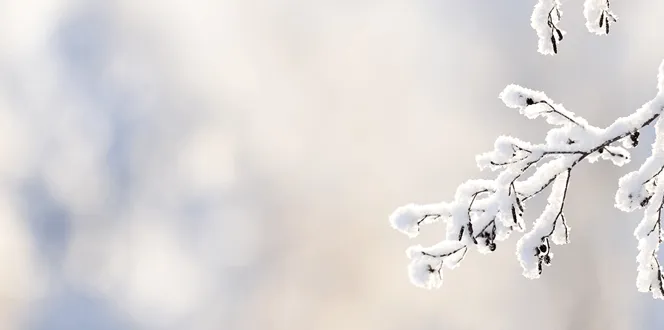Bark is known as the tough armor that shields trees from outside stressors, like extreme weather or disease. But what happens when bark needs protection?
During winter, sunscald and frost cracks can injure tree bark, which in turn threatens the health of our trees. But with your help, bark damage can be prevented.
So let’s get to it! Below, read more about the threats to tree bark in winter, and learn what you can do to keep your trees safe.
What is sunscald?
To answer this question, let’s quickly talk about the layers of tree bark. The outermost layer is appropriately named the outer bark. Directly underneath that is the phloem or inner bark, which funnels food throughout the tree. Then there’s the cambium layer, the growing part of the tree that creates new wood each year.
OK, now sunscald. Here’s how it happens: cells in the phloem and cambium layer that had been dormant (i.e., resting) get activated when sunlight shines on tree bark during a warm winter day. But when the temperature drastically drops at night, those cells are injured. The result is a discolored, sometimes sunken area of bark on the southwest side of the tree.
Will sunscald kill a tree?
Usually, sunscald on trees isn’t fatal. But it depends. Very young trees that don’t have fully developed bark could be damaged to the point that removal is necessary. For mature trees, it’s much less likely that sunscald will be life-threatening.
What causes frost cracks in trees?
Fluctuating winter temps can also cause frost cracks. A repeated switch from warm to freezing temperatures causes the inner layers of bark to expand then shrink over and over. Eventually, that tension causes a crack.

Will frost cracks kill a tree?
Frost cracks themselves likely won’t kill a tree, but they do invite other stressors like insects and disease. That’s why it’s important to spot and identify bark issues early. If you’re not sure if your tree is suffering from sunscald or frost cracks, contact a local office for a consultation.
How to repair split bark on trees
Trees have the incredible ability to seal their own wounds. Through a process called compartmentalization, trees gradually cover wounds with plant tissue and then produce new, healthy wood over the once-damaged area. Cool, huh?
The best thing you can do is leave your tree be during this natural process. But if you’re determined to help, we recommend taking a proactive approach by fertilizing in spring to support new growth.
Preventative winter tree care tips for sunscald and frost cracks
Before winter, take these few steps to protect your trees from injury:
- Deepwater your tree all the way up until the ground freezes. Hydrated trees are much less vulnerable to sunscald than drought-stressed trees.
- Mulch trees in fall to seal in moisture from tree watering.
- Cover the trunk with a tree guard in fall to protect the bark from direct sunlight. Remember to remove the tree guard at the right time.
- Consider planting shrubs or smaller plants on the southwest side of the tree to shade its bark.
Throughout winter, keep in mind that symptoms of sunscald may not appear until the season’s over.





